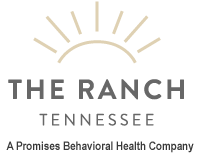Lysergic acid diethylamide, or LSD, is one of the most common psychedelic substances. LSD, also known as “acid,” is a potent mind-altering chemical that has a range of effects. In this article, we will explore these effects in-depth, as well as examine the drug’s potential risks, including the question of whether LSD is addictive.
What Is LSD?
LSD is a serotonergic drug. This means the chemical acts on the serotonin receptors in the brain. LSD stimulates these receptors, which results in changes to a user’s perception, thoughts and emotions. Other serotonergic psychedelic drugs include psilocybin (found in “magic mushrooms”) and DMT. LSD is derived from ergot alkaloids, which are produced from the ergot fungus that grows on rye. LSD begins as a crystal. It is then turned into a liquid through a specific chemical process. This liquid is usually applied to small squares of paper known as blotters or tabs that users consume.
Where Did LSD Come From?
The Swiss chemist Albert Hofmann discovered LSD in 1938. At the time, he was studying the ergot fungus to see if its active ingredients could be used as pharmaceuticals. In his research, he synthesized LSD, aiming to study the substance as a central nervous system stimulant (analeptic). It was set aside for five years. Then, when synthesizing LSD again in 1943, he accidentally ingested a small amount of the drug when handling it. This resulted in the world’s first acid trip. After Hofmann’s discovery of LSD, researchers around the world studied the drug’s potential to treat alcoholism and various mental disorders. This research came to a halt in the 60s, when the U.S. government banned the substance. Both before and after the ban, secret chemists produced millions of hits of acid for public consumption. This helped to fuel the 60s counterculture movement.
Signs and Symptoms of LSD Use
It’s important to be aware of both the physical and psychological symptoms of LSD. These effects can last for around 12 hours, although sometimes longer, depending on the dosage. If you often notice these symptoms in a loved one, it could be a sign that they are abusing LSD. Physical signs of LSD use include:
- Dilated pupils
- Restlessness
- Impaired coordination
- Loss of appetite
- Sweating
- Higher body temperature
- Dizziness
- Sleeplessness
Psychological effects of LSD use include:
- Euphoria or joy
- Increased empathy
- Giddiness
- Paranoia
- Anxiety and panic
- Agitation
- Confusion
- Distortions in the perception of space and time
- Visual/auditory distortions or hallucinations
Is LSD Addictive?
LSD is not physically addictive, which means that there are no physical withdrawal symptoms when you stop using it. However, people who frequently use LSD for its positive effects may experience a psychological addiction to the drug. When this occurs, stopping use may lead to some negative side effects, including:
- Cravings
- Anxiety
- Stress
- Dysphoria
- Anhedonia (lack of pleasure)
Is LSD Dangerous?
LSD is non-toxic. When taken at standard doses (50-200 micrograms), LSD is not known to cause damage to any organs. Some deaths have resulted following LSD use but evidence shows that these deaths weren’t due to LSD alone. In each case there were physical issues, such as multi-organ failure, dehydration and hyperthermia. Also, street dealers may sell other drugs (e.g., 25i-NBOMe) as LSD, which can be physically harmful.An LSD overdose happens when a user takes 1,000 to 7,000 micrograms of the substance. This is an amount that most users will never come into contact with. However, even at a standard dose, LSD can still be dangerous. This is because the drug can result in profound psychological distress, as well as long-term negative effects. Some research has shown that people who use LSD are not at any increased risk of developing a mental illness. Nevertheless, LSD could make symptoms of mental illness worse or trigger latent schizophrenia. Also, many users who have negative experiences with LSD report long-lasting changes in their mental health, often for the worse. These changes could be severe depression, panic attacks, anxiety and insomnia.
LSD Bad Trips
A difficult LSD experience is known as a “bad trip.” This unpleasant experience can involve the following:
- A feeling that the experience will never end
- Paranoia
- Feeling worthless or that life is not worth living
- Suicidal thoughts
- A loss of identity
- Scary hallucinations
- Anxiety
- Delusions
- Racing thoughts
- Overthinking and overanalyzing everything
- “Thought loops” (e.g. when your mind keeps replaying the same thoughts and you struggle to break the loop)
- Mood swings
- Aggression
Acid Flashbacks
Reports of acid flashbacks have existed since the 50s. This involves a re-living of the experience in some manner and can feature distorted perception, affecting the way you see, hear and feel the things around you. It is estimated that 5% of people who use drugs like LSD have non-disturbing flashbacks. This usually manifests as slight differences in sensory experiences a day or two after use. Effects of a flashback may include seeing changes in color, geometric patterns or trails following moving objects. More rarely, users will re-experience the more intense aspects of LSD. This can happen weeks or even months after use and may be more likely to occur when a user has a particularly distressing or traumatic experience with LSD.
Hallucinogen-Persisting Perception Disorder
The medical term Hallucinogen-Persisting Perception Disorder (HPPD) applies to what we might call acid flashbacks. HPPD is linked to persistent LSD use, although it could result following a single intense experience. It involves changes in perception days, weeks, months or even years following use. These visual distortions or hallucinations can be accompanied by the same feelings one had when on LSD. Researchers are not sure why HPPD occurs. We know that it doesn’t happen as a result of the body storing LSD and re-releasing it (a myth started in the 60s). Some believe it happens due to brain changes as a result of long-term LSD use. Others say it could be a kind of post-traumatic stress disorder (PTSD). For instance, if you had a traumatic LSD trip, you may re-experience the trip and feel significant distress.
Treatment for LSD Abuse
If you’ve thought about whether LSD is addictive and are worried that you or a loved one is struggling with LSD abuse, treatment is available. Inpatient treatment can offer a wide range of benefits for individuals who primarily abuse LSD:
- Preventing access to LSD
- Close monitoring of an individual’s well-being following cessation of LSD use
- Individual and group therapy to address the underlying reasons behind the person’s drug abuse
- The development of healthy coping skills, which are essential to preventing relapse
- Medication to alleviate any symptoms of HPP
Outpatient treatment is another option for those struggling with LSD abuse. Unlike inpatient treatment, clients do not stay at the facility. Instead, they visit during the day to receive treatment and are able to attend work and fulfill other responsibilities as normal. Take the first step to a better life. Call today for a free, confidential consultation: 1.844.876.7680


